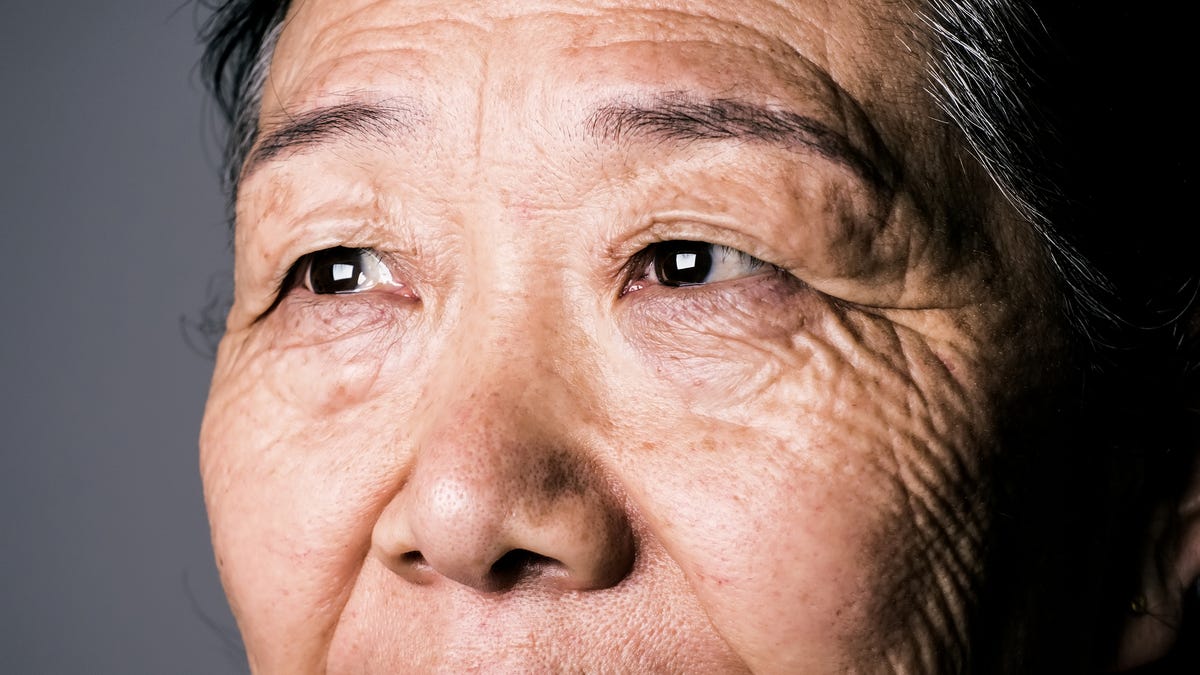A lot of the things we do take a toll on our eyes. Whether you stare at a screen for work or head out into the sun on the weekend, your daily activities could be increasing your risk for eye strain and vision problems.
And that gets truer as we get older. Aging vision means changing vision — and not usually for the better. As the years tick by, it’s common to have problems seeing things up close, distinguishing between colors and more.
A lot of the problems you might encounter with aging eyes stem from specific conditions. Here are six to keep on your radar. This is by no means a comprehensive list of all of the eye conditions that can arise with aging vision, but it’s a good place to start.
Presbyopia
That’s a fancy way of saying age-related farsightedness. If you find yourself squinting at menus or turning up the brightness to try and read texts on your phone, you might have presbyopia.
And you’re not alone. After age 40, nearly every person will deal with some level of aging vision caused by presbyopia, according to the Mayo Clinic. Fortunately, you have plenty of options for correcting this nearsightedness, from eyeglasses and contacts to surgical solutions. Talk with your eye doctor. They can recommend a treatment to keep you seeing clearly even with aging eyes.
Age-related macular degeneration
Age-related macular degeneration affects your central vision but leaves your peripheral vision unchanged. It’s a leading cause of vision problems, including vision loss, in people over 50, per the American Academy of Ophthalmology. You get AMD when your macula, a key part of your retina, changes.
Most people get dry AMD, which causes you to lose your central vision slowly over time. You can check for this issue at home by looking at an Amsler grid once daily.
If you notice any vision problems as you look at the grid, talk with your eye doctor as soon as possible. Modifying your diet and taking supplements can help to slow the progression of AMD.
An Amsler grid.
Dry eyes
People of all ages deal with dry eyes, but this is a common issue with aging eyes. Why? Because your body naturally makes fewer tears as you get older. By the time you hit 65, you’ll very likely have some dry eye symptoms.
This condition doesn’t just cause redness, a stinging sensation, and other discomfort, either. It can also blur your vision. Fortunately, a lot of people find relief with over-the-counter artificial tears (look for preservative-free options). And if those don’t work, you can explore ways to keep more of your tears in your eyes, like punctal plugs.
Glaucoma
Glaucoma is the name eye health pros use for a group of conditions that cause vision problems — including blindness — because of damage to your optic nerve. This nerve, located in the back of your eye, plays a huge role in allowing you to see. Different types of glaucoma work differently, but they all cause damage because of too much pressure on the optic nerve.
The most common type of glaucoma is open-angle glaucoma. It usually doesn’t cause symptoms at first, but creeps in over time, slowly eating away at your peripheral vision. If you don’t do something to relieve the pressure in your eye and protect your optic nerve, it can eventually cause total blindness.
The big thing you should know about this aging vision problem: the vision loss it causes can’t be undone. Instead, glaucoma treatment focuses on preventing any further vision loss. Have your eye doctor check for this condition at your routine eye exams. When they catch and start treating it early, you should be able to avoid serious vision problems.
Cataracts
This is one of the most common issues with aging eyes. The National Eye Institute reports that over half of Americans over the age of 80 either have cataracts or have had them removed.
You develop cataracts as the proteins in the lens of your eye start to break down and clump together. Over time, this causes the cloudiness you probably think of when you picture a cataract. The cataract makes your vision fuzzy, causes colors to look faded and lessens your ability to see at night.
Treating cataracts depends on how much this condition affects your aging eyes. Early on, modifications such as using brighter lights at home and a different eyeglass or contact lens prescription can help. Eventually, though, many people choose surgery to remove the cataract.
Other changes in sight
We just hit on five of the most common problems for aging eyes. But aside from specific conditions, aging can also lead to other changes in vision. According to the National Institute on Aging, it’s normal to notice some vision problems like difficulty telling colors apart and taking more time to adapt to changes in the amount of light. You might notice more glare sensitivity or need more light for specific tasks, the American Optometric Association says.
When you notice changes in your ability to see, it’s a sign to get an eye exam. In a lot of cases, your eye doctor will be able to offer treatment to correct whatever’s changing in your eyes.
How to protect your eyes
Aging eyes can mean problems down the road, but you don’t have to sit idly by and wait for issues to crop up.
If you’re looking for ways to care for your eyes on a daily basis, we’ve got some tips to get you started. You can also adjust your diet to include more eye-healthy foods and your lifestyle: always wear sunglasses with UV protection when you head outdoors.
Beyond that, getting regular eye exams goes a long way toward avoiding vision problems. A good eye doctor can evaluate your eyes and catch issues early when they’re easiest to treat.

